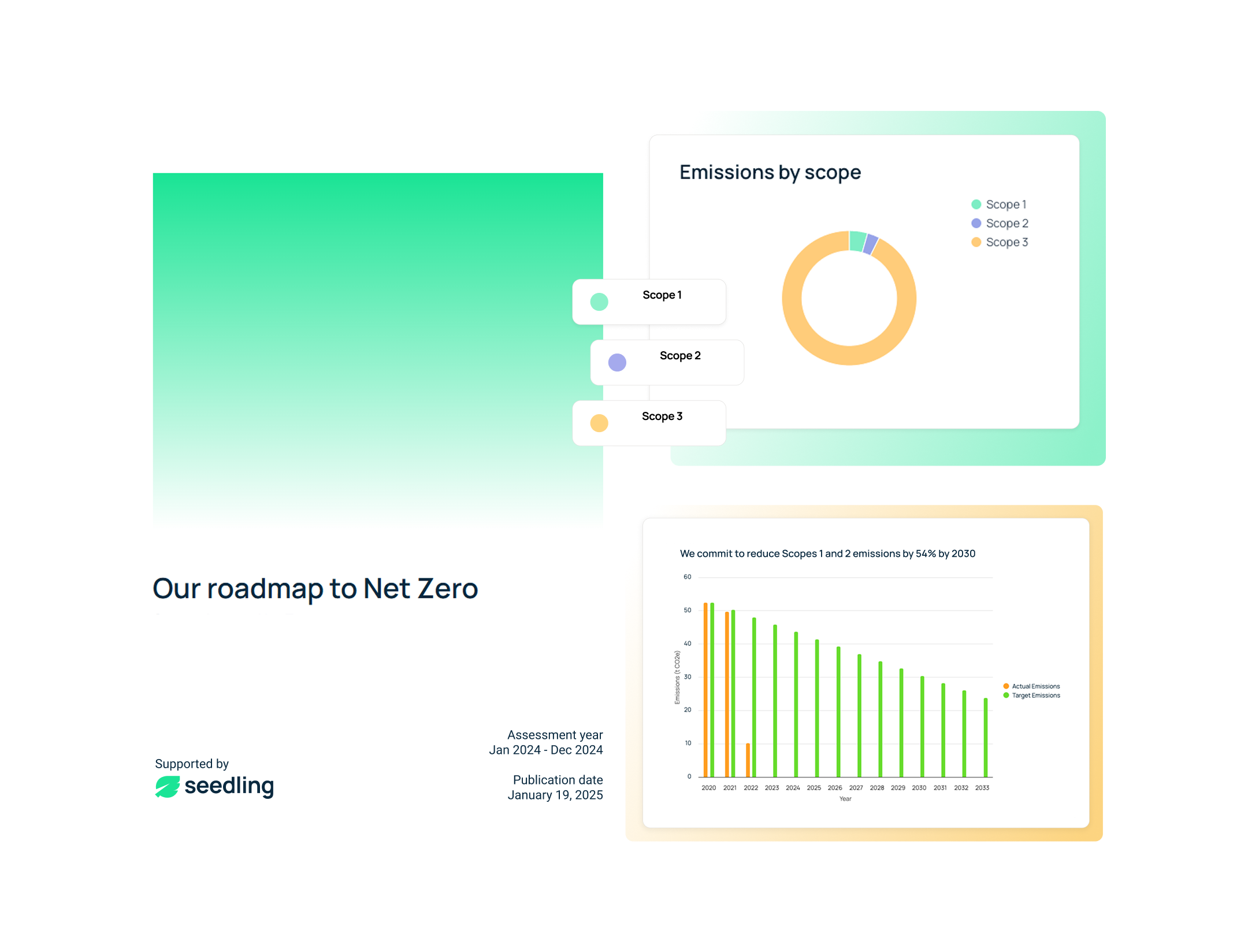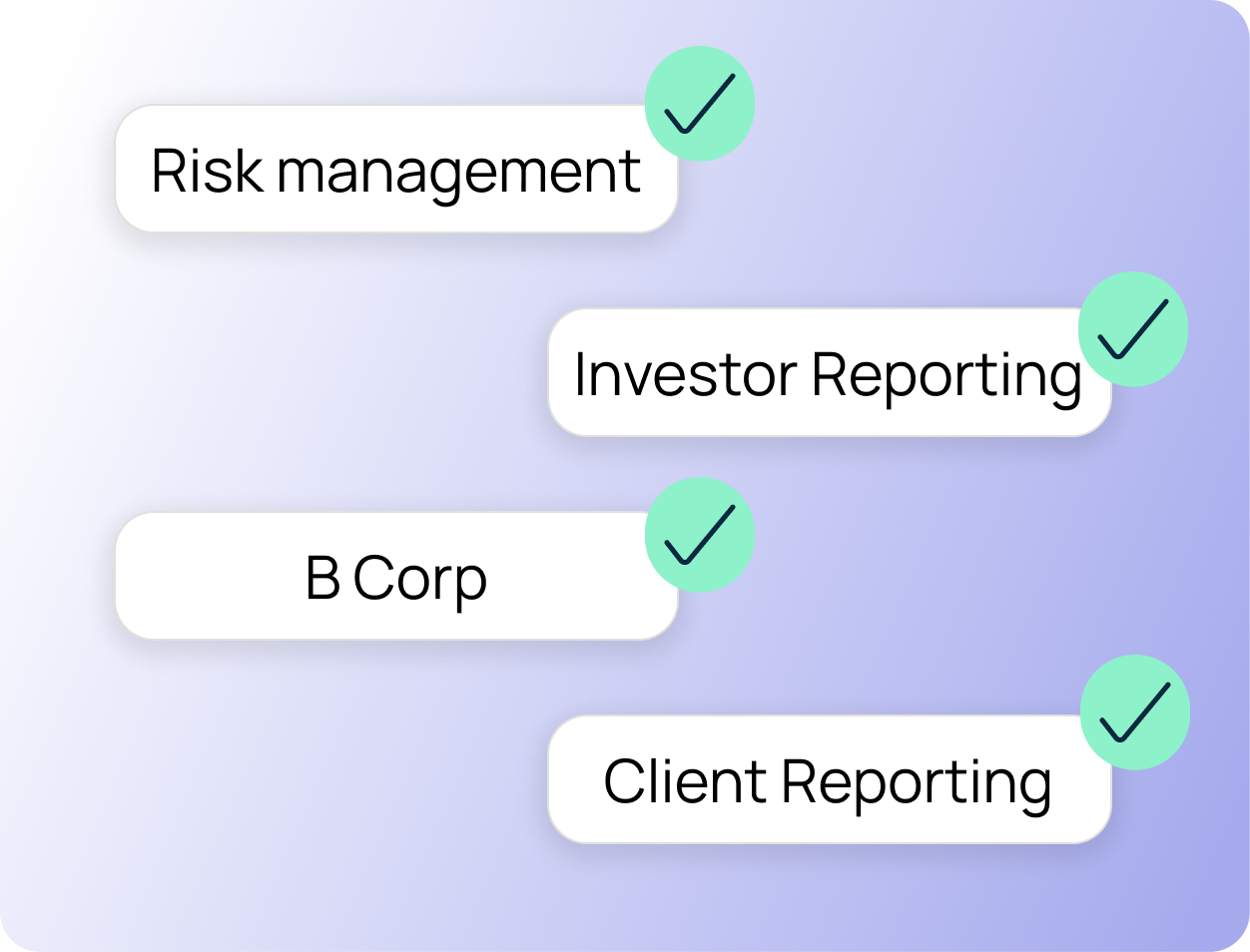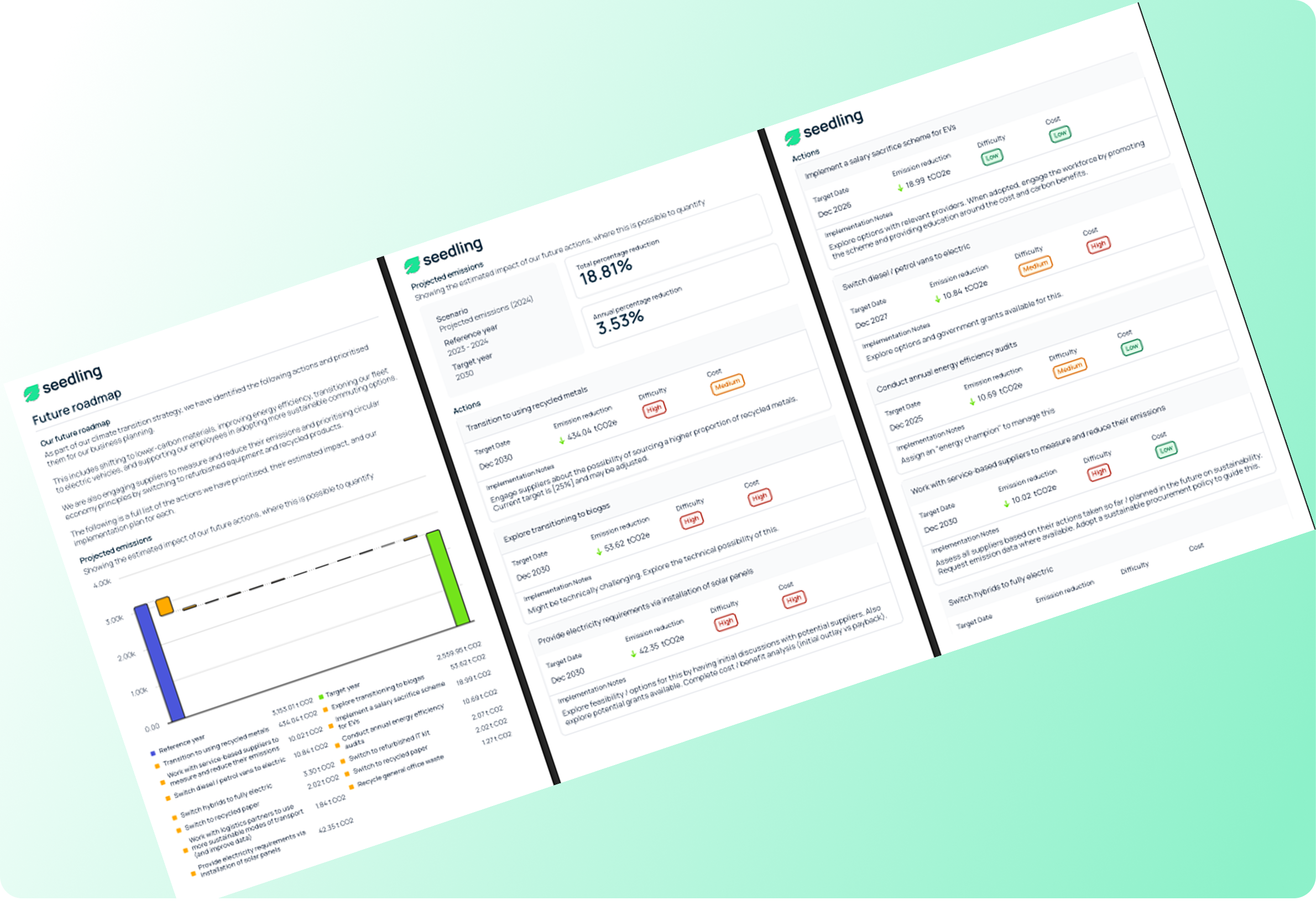.png)






.png)



















A Climate Action Plan outlines how a business will cut greenhouse gas (GHG) emissions through SMART goals - specific, measurable, achievable, relevant, and time-bound targets—aligned with the global goal of limiting warming to 1.5°C.
It sets clear timelines, and holds the business accountable for progress toward Net Zero. It’s a transparent roadmap that embeds climate action into core strategy and demonstrates real commitment to long-term resilience.
A Climate Action Plan is now a core required component of the new B Corp standards.
It also helps businesses stay ahead on both regulation and stakeholder reputation. It builds investor confidence and meets customer expectations.
Internally, it serves as a unifying roadmap - aligning teams across functions with shared, evidence-based goals that guide investments and prioritize actions where they have the greatest impact.

Read our article on how the B Corp standards are changing, and what it means


While B Corp does not require businesses to measure emissions or set science-based targets, these steps are considered best practice for credibility and impact. The process typically begins with measuring GHG emissions across Scopes 1, 2, and 3 to identify your biggest impact areas. From there, you set SMART targets -both short- and long-term - that balance ambition with operational realities.
The plan should then map out how you’ll reach those targets: outlining reduction actions, assigning responsibility, estimating costs, and scheduling implementation. Strong governance and regular progress tracking are critical to ensure accountability and keep momentum, turning commitments into measurable results.
Starting from zero can feel overwhelming, but you don’t need to get everything perfect right away.
Begin with the data you already have to create a baseline of your emissions, and improve accuracy over time.
What matters most is that your Climate Action Plan is practical, data-driven, and tailored to your business realities.
Be transparent about challenges—whether technical or financial—and focus on achievable first steps. Even a few targeted actions, like upgrading to hybrid vehicles or engaging suppliers, can build momentum and show progress.
.png)
Fill in the form below to get your copy.
Some common questions answered around our template.
While sustainability programs can cover a broad range of social and environmental topics, a Climate Action Plan specifically targets greenhouse gas (GHG) emissions with measurable goals and timelines tied to the global effort to limit warming.
At minimum, review progress annually and adjust targets or actions as new data, technologies, and business realities evolve. For B Corp, you should refresh the pan entirely every 3 years.
Employee engagement is critical. From daily operational changes to innovative ideas, staff can help identify opportunities, champion actions, and embed climate responsibility across the organization.
Transparency is key. Share clear goals, progress, and challenges with stakeholders. This builds trust and shows that your business is taking climate action seriously - not just making pledges.
You don’t have to, but alignment with recognised frameworks (like the GHG Protocol for measurement, or SBTi for targets) increases credibility and comparability. For regulated sectors or larger businesses, standards may be required.
Book a demo or get in touch and we'll be happy to help.